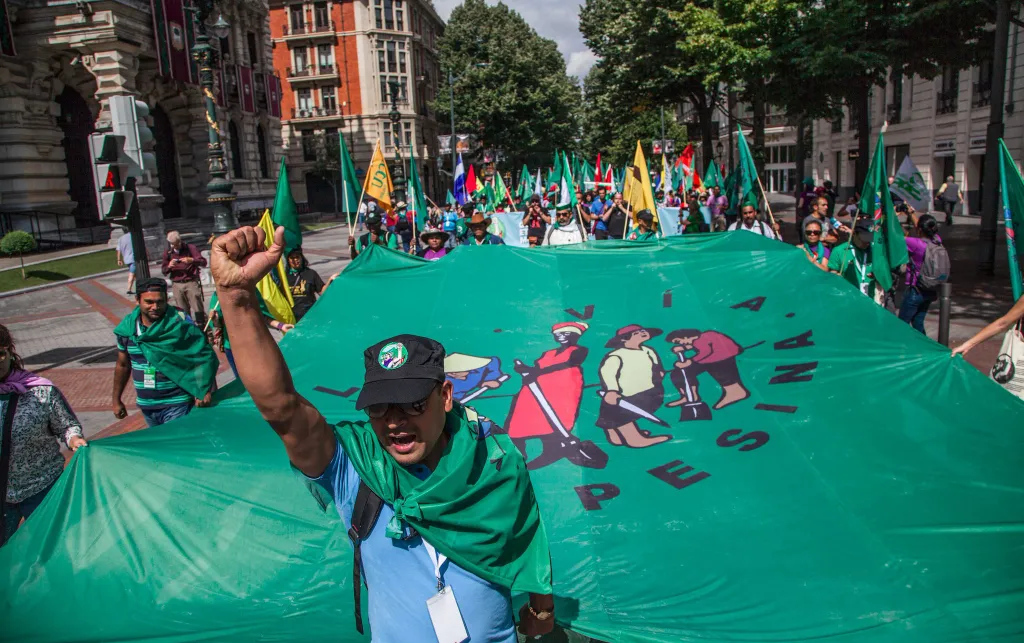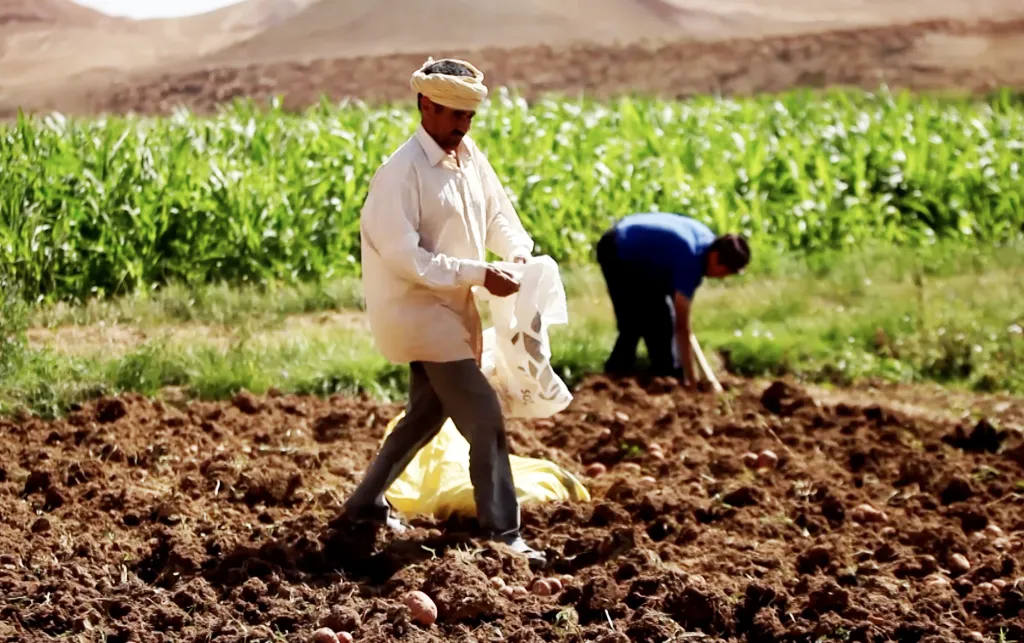PART 2 — FOOD SOVEREIGNTY IN ACTION
Peasant communities around the world are leading this struggle to put power over food production and distribution back in the hands of people. Through food sovereignty, peasants know how to grow food sustainably for their own societies and for the planet.
Peasants and other people working in rural areas have the right to determine their own food and agriculture systems, recognized by many States and regions as the right to food sovereignty. This includes the right to participate in decision-making processes on food and agriculture policy and the right to healthy and adequate food produced through ecologically sound and sustainable methods that respect their cultures.”
Food sovereignty enables communities to grow food that is appropriate for their lands and culture and guarantees democratic control over how it is distributed and traded. It is a practical solution that puts power in the hands of people, not corporations.
It is also the only model capable of cooling the planet, which can ensure “a just transition rooted in people’s power, ecological and social wellbeing and solidarity at local, regional and international context”.96
Unlike the current agrifood system, food sovereignty provides protections for the world’s most marginalised people and the planet’s biodiversity; and is not based on northern monopolies exporting crises to the Global South. Peasant agroecology is "the basis of our proposal and vision for the food sovereignty of the peoples of the world”.97
We need to fight for genuine, integral and popular agrarian reform, the defence of Indigenous and peasant territories, and the recovery of local food systems…we need to build new relationships between the working people of the countryside and the city.”
Many of the movements and peasants’ organisations building the alternatives for national food sovereignty on the ground have been working for years with War on Want.

Food sovereignty, in practice, can take different forms:
-
Land Rights: peasant movements organising to demand agrarian reforms and the recognition of alternative forms of ownership, including claiming common and ancestral lands
-
Seed Sovereignty: challenging the patenting of seeds by corporations, and establishing community seed banks to ensure the rights of peasant communities to use, save and exchange seeds
-
Workers’ Rights: workers across the world standing together in solidarity. UK workers’ international solidarity actions have helped secure better rights and pay for farmworkers in the Global South working for international supply chains
-
Solidarity Economies: building alternative value and supply chains by developing localised markets, establishing cooperatives and community credit systems
-
Peasant Agroecology: challenging the toxic trade and agrotoxin monopolies and creating a production and agricultural model that respects the planet, its biodiversity and the livelihoods of rural communities, peasants, and Indigenous populations
International peasant networks and movements are growing, connecting different struggles – workers' rights, Indigenous peoples and climate justice – organising together in important policy spaces, and winning crucial battles. In 2010, the conclusion of the UN Convention on Biological Diversity (CBD) talks in Japan called for new financial mechanisms, including a “green development mechanism”, to generate offsets from land areas managed in compliance with the CBD. However, the decision was not adopted: it was blocked by the Bolivarian Alliance for the Americas (ALBA), led by Bolivia. The ALBA expressed its concerns that such market-based proposals could cause the ‘commodification’ of nature, harm biodiversity, and violate human rights.99
The adoption of the UNDROP in 2018 by the United Nations was the result of a long struggle by peasant movements and civil society – and a huge win.100
FOCUS: Who really feeds the world?
A key issue in debates around transformative visions for the world agrifood system is the question of how to ensure there is enough food to feed the world’s population. There is an assumption that we need the highly productive farming technology of industrial agriculture, and the Green Revolution technology, to ensure enough production. However, this is not the case: there is plenty of food in the world, around 6,000 calories per person if waste is taken into account, when only 3,000 calories need to be grown and produced to sufficiently feed everyone.101
Since the Green Revolution sixty years ago, highly intensive farming technology has been considered the most effective way to produce enough food: however, the social, economic and environmental impacts of this model have been devastating. It has become increasingly evident that the solution is smallholder, peasant farming. The ETC Group has long estimated that approximately 70% of people globally are fed by or depend upon peasant agriculture, which uses “less (often much less) than 25% of the resources – including land, water, fossil fuels – used to get all of the world’s food to the table”.102
Other recent research has claimed these figures are over-stated, and that just 34% of food is grown on farms smaller than two hectares, on just 12% of arable land globally. However, even if the lower estimate is correct, smallholder peasant farmers are still using land far more efficiently, and if their methods of farming were applied more widely, across more of the world’s arable land, they could grow a larger percentage of the world’s food.103
However, it is important to highlight that the ETC group research is also focused on the nutritional contribution of peasant farming (peasant farms produce more food and more nutritious food per hectare than large farms) and how important this chain is for the food consumption of most of the population in the Global South; while other research focuses only on total yield production, without considering if that production is destined for feeding people or fuelling cars.104
The definition of smallholder farmers also varies from geographical regions. Two hectares is a tiny ceiling for small farms: a small farm in the Tunisian northern cereal belt, for example, is at least 10 hectares. A small farm in the semi-arid central zones is 20-30 hectares.
When we look at major population centres, the significance of small-scale farming is also clear.
In China, home to a fifth of the world’s population, small-scale producers grow 80% of the food consumed nationally. In Latin America, 17 million smallholder farms grow 51% of the maize, 77% of the beans, and 61% of the potatoes consumed across the continent. And on the African continent, 80% of food is both consumed and grown by peasant and small-scale farmers.105
Such farmers generally require little capital investment and most use some type of agroecological techniques.106
Not only does peasant farming already feed much of the world in the face of the huge monopoly power wielded by corporate agribusiness; under improved conditions, peasant farming could be the best option for feeding the world.

